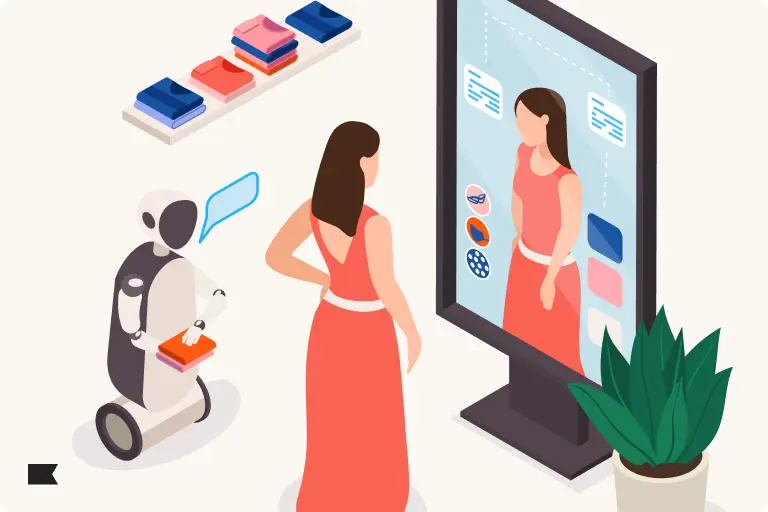Google’s “Buy for Me” and the next wave of AI-powered retail

This November, Google began rolling out a suite of AI-powered shopping tools designed to take shoppers from browsing to buying. The update which is anchored by its new “Buy for Me” feature lets users hand off product discovery, comparison, and checkout to Google’s agentic AI.
From search to shopping to doing
With price tracking, visual try-ons, and conversational search built into AI Mode, Google is positioning itself not just as where shopping journeys start, but where they finish.
With the new Buy for Me feature users can:
- Ask Google to compare items (“Compare Dyson vs. Shark hair dryers”),
- Instruct it to buy (“Buy whichever is in stock at Target under $250”),
- And let it handle everything from verification to payment.
The result is that the last mile of ecommerce, i.e. the checkout process itself, is now something the consumer can outsource entirely.
This may sound small, but it represents an opportunity for a major behavioral shift. Consumers have already grown used to auto-fill, one-click checkout, and saved payments. Buy for Me could be the next step, removing even the cognitive effort of purchase.
And with Google bringing it to market, there’s a decent chance it will catch on.
Why this matters for B2C marketers
1. Engagement is moving upstream
When Google, or any platform, completes a purchase on behalf of the consumer, it becomes the owner of the engagement moment. That means fewer direct interactions flowing into brand-owned ecosystems, and potentially fewer first-party touchpoints unless brands plan for them.
For marketers, that means redefining how engagement is recognized and captured. Instead of waiting for a site visit or cart action, brands will need to interpret upstream behaviors—searches, reviews, and product feed activity—to understand who’s exploring or considering their products, even when discovery and decision-making happen off-site.
2. Merchandising becomes metadata
Agentic checkout relies on structured product information, not branding or creative storytelling. Google’s system “reads” feeds that include price, dimensions, availability, and fulfillment options, not campaign copy.
This means your product data is now a marketing asset. B2C brands must treat their catalog and feed hygiene like SEO in 2012: whoever optimizes first will rank higher in agentic recommendation logic.
3. The loyalty loop is evolving
If consumers buy through Google, the impact on loyalty depends on what data is shared back. In cases where full order data, including contact information, is passed to ecommerce platforms like Shopify, brands can still nurture post-purchase relationships as usual.
The real challenge isn’t the transaction itself. It’s differentiation. When consumers can purchase interchangeable products through Google’s agent, brands that sell goods also available from competitors will need to invest more heavily in brand perception and preference. That means using owned channels like email, SMS, and loyalty programs not just for retention, but to reinforce why your brand is the one worth choosing again.
What brands should do next
Strengthen your feed health
Audit your Google Merchant Center data to ensure accurate pricing, inventory, rich attributes, and schema markup. The cleaner and more complete your feed, the more likely Google’s agent will recommend your product over a competitor’s.
As Google Pay becomes increasingly integrated into the buying experience, it’s also worth enabling it as a checkout option on your own site. Doing so can create a more seamless, trust-driven experience for shoppers who start their journey in Google’s ecosystem and helps align your site with the same infrastructure that powers agentic checkout.
Incentivize owned engagement post-purchase
If a customer buys via Google, use packaging inserts, QR codes, or post-purchase emails to pull them into your owned ecosystem. Offer value beyond the product like exclusive drops, loyalty points, or content that builds connection.
Prepare for an “agentic shopping” era
As more consumers begin to explore agentic shopping, where AI systems assist with discovery and purchase, the marketer’s role will shift from managing campaigns to managing data relationships. Success will hinge on ensuring your brand is recognizable, retrievable, and relevant to the systems doing the buying.
From clicks to commands: the marketer’s new mandate
What’s happening isn’t the death of direct-to-consumer. It’s the evolution of consumer delegation.
Consumers have moved from discovery (“search”) → comparison (“review”) → automation (“buy for me”). The marketer’s job is no longer just to attract attention but to earn selection in a world where machines make the first move.
That means brands must invest in:
- Structured data so agents can find you
- Emotional connection so consumers choose you again
- Connected systems so you can activate and personalize on the data you get
Google’s Buy for Me may look like a convenience feature, but it’s actually a signal: commerce is entering the age of delegation. The brands that thrive will be those that design their marketing not just for consumers, but for the agents acting on their behalf.

Related content

Learn how K:AI (Klaviyo AI) accelerates strategy, optimization, and customer engagement with unified data and autonomous AI built inside Klaviyo.

New York’s new AI pricing law is reshaping how brands use algorithms and customer data. Here’s why it matters—and what it means for consumer trust.

Discover the impact of AI on marketing and how brands can adapt with conversational content, personalization, and AI-powered customer experiences.